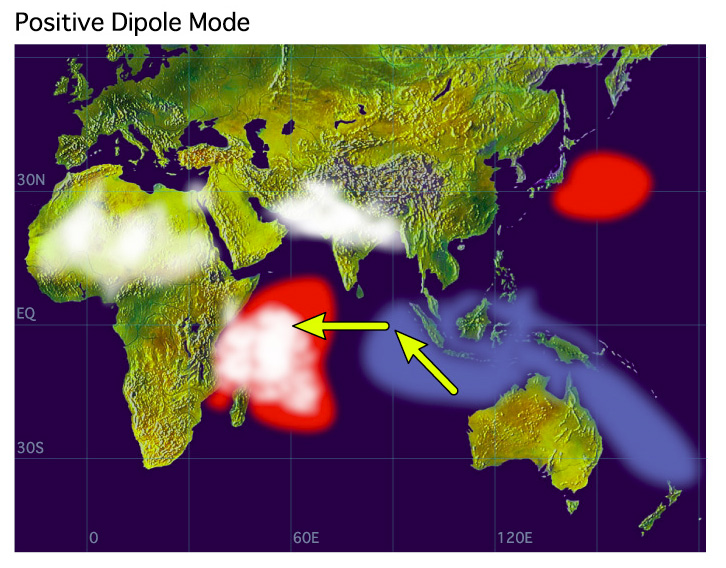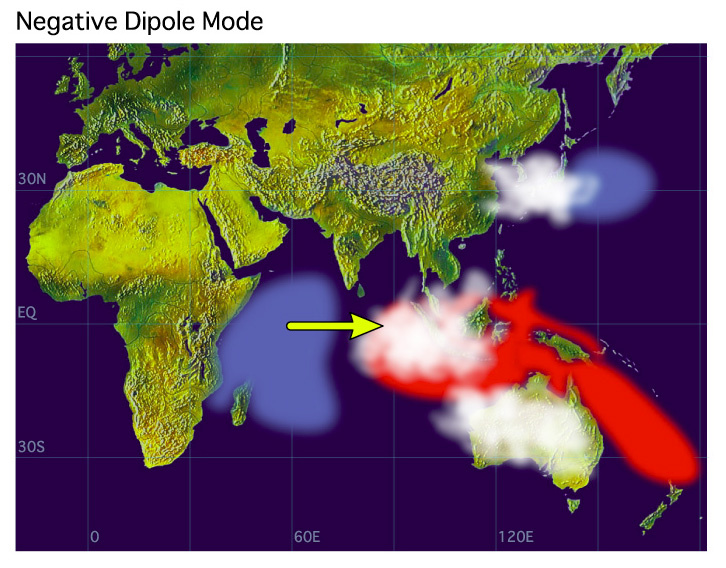The Indian Ocean Dipole (IOD) is a coupled ocean-atmosphere phenomenon in the Indian Ocean. It is normally characterized by anomalous cooling of SST in the south eastern equatorial Indian Ocean and anomalous warming of SST in the western equatorial Indian Ocean. Associated with these changes the normal convection situated over the eastern Indian Ocean warm pool shifts to the west and brings heavy rainfall over the east Africa and severe droughts/forest fires over the Indonesian region.
Schematic of a positive IOD event. |
Schematic of a negative IOD event. |
 |
 |
SST anomalies are shaded (red color is for warm anomalies and blue is for cold). White patches indicate increased convective activities and arrows indicate anomalous wind directions during IOD events.
The name " Indian Ocean Dipole (IOD) " was coined by Prof. Yamagata, Dr. Saji and other researchers of the Climate Variations Research Program (CVRP) of Frontier Research Center for Global Change (FRCGC) to represent the zonal dipole structure of the various coupled ocean-atmosphere parameters such as SST, OLR and Sea Surface Height anomalies. Generally, this configuration is also called positive IOD. Infact, a negative IOD also evolves preceding/following a positive IOD, with reverse in the configuration of the positive IOD.